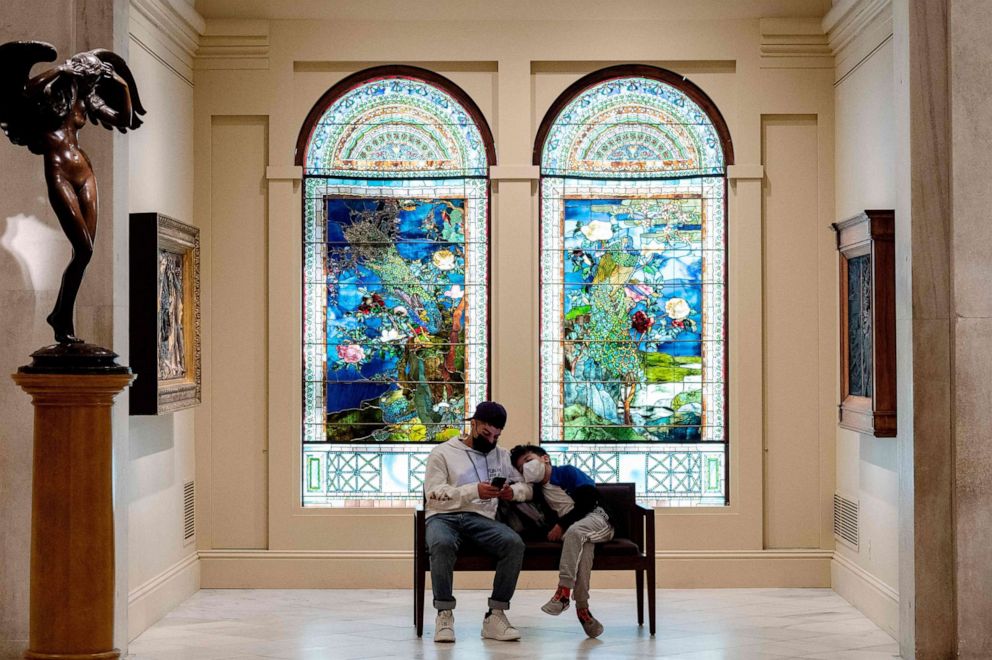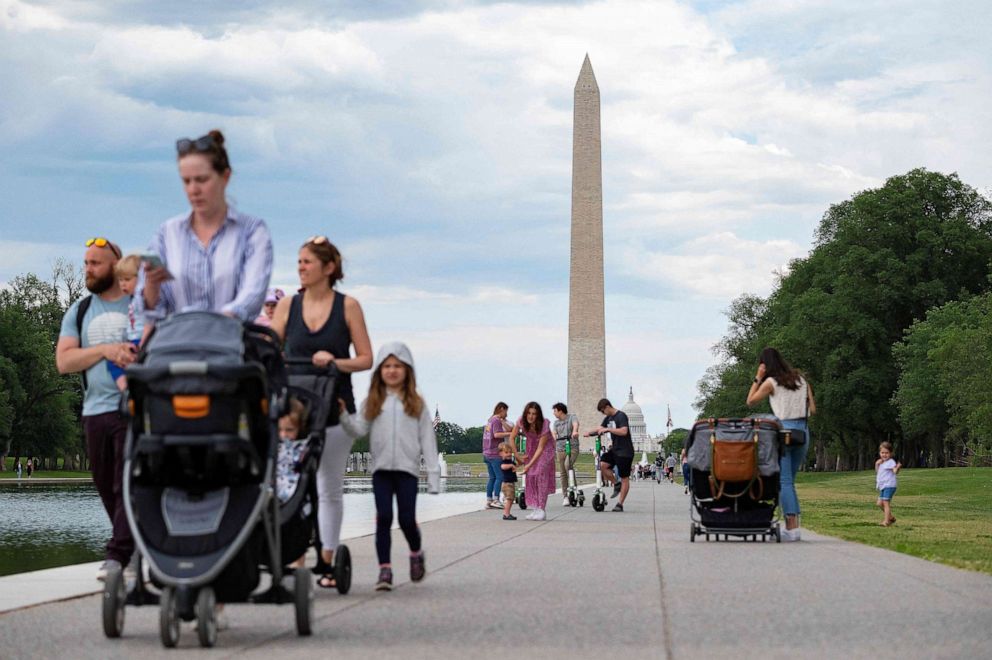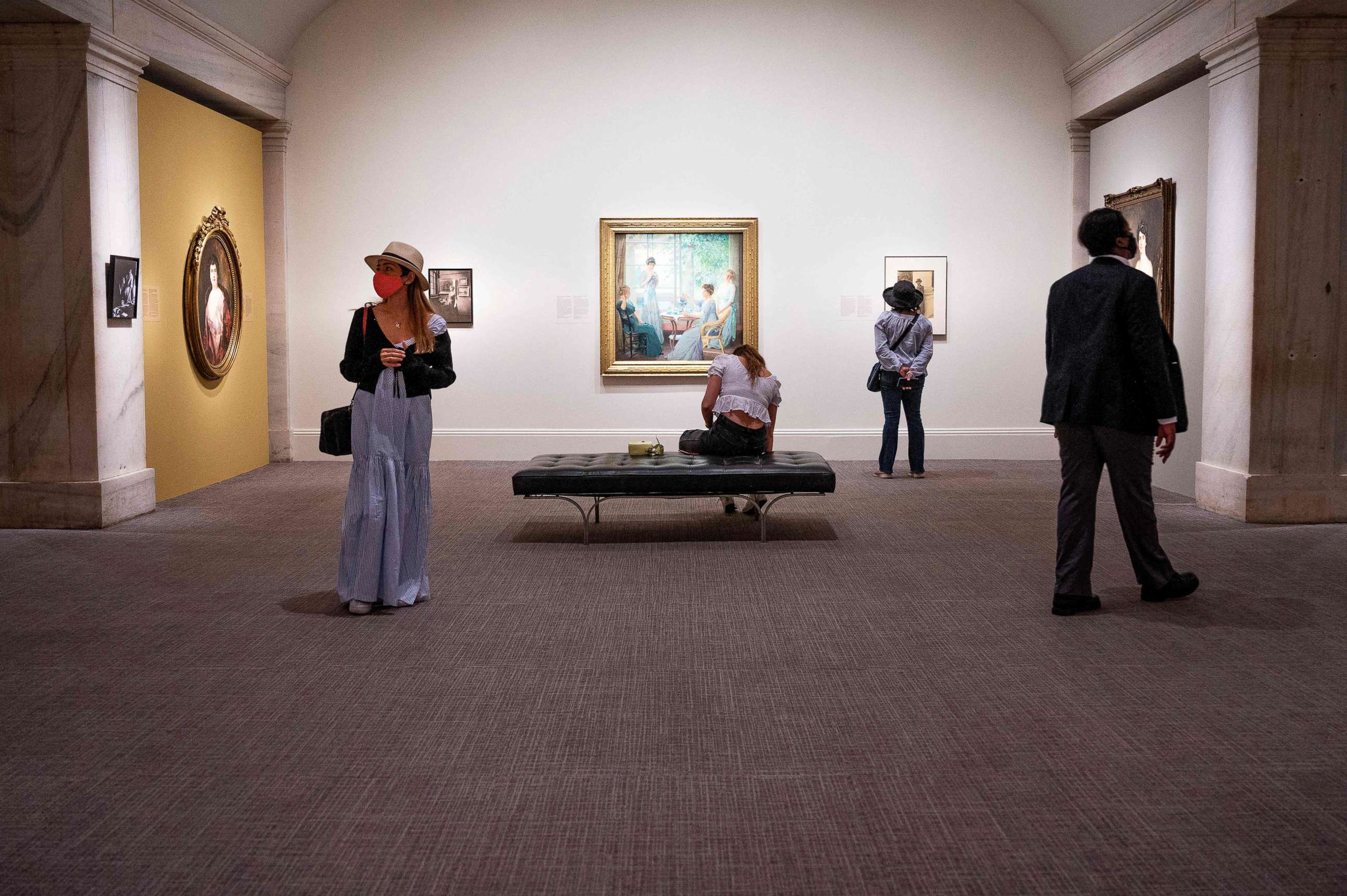Nation's capital, Smithsonian museums begin to reopen
Eight of the Smithsonian museums are reopening, but with some restrictions.
The nation's capital is beginning to reopen as the District of Columbia rolls back restrictions and the Smithsonian Institution reopens eight of its world-famous museums and facilities.
Mayor Muriel Bowser announced last week that the district would fully reopen without and capacity limits on June 11. Restrictions on public and commercial activity including capacity limits, types of activities and time restrictions will be lifted on Friday.
The announcement came as city's daily positive COVID-19 cases fell to 15, which is the lowest case count the city has seen since the fall.

Along with bars and restaurants across the city, the iconic Smithsonian has begun to reopen eight of its facilities.
It began by reopening the Steven F. Udvar-Hazy Center, a branch of the National Air and Space Museum in Chantilly, Virginia, on May 5, the "60th anniversary of the first U.S. human spaceflight," according to the Smithsonian. The Mercury capsule used by Alan Shepard during his first spaceflight, Freedom 7, is on display at the center through the season.
"We sure do love having visitors in the building again," the National Air and Space Museum tweeted when the Udvar-Hazy Center reopened.
The main National Air and Space Museum on the National Mall remains closed.
Other Smithsonian facilities, including the National Museum of African American History and Culture, the National Portrait Gallery and the Smithsonian American Art Museum and Renwick Gallery reopened last Friday.
"We've missed you!' the National Portrait Gallery said in a tweet from late April about its upcoming reopening.
The National Museum of American History, National Museum of the American Indian and the National Zoo will all reopen this coming Friday. The American history museum is set to recognize Asian Pacific American Heritage Month with virtual events, resources and traveling exhibits about Asian Americans.
However, the reopening of the popular tourist attractions do not come without restrictions.

Visitors must reserve passes for allotted times up to a week in advance. They are also asked to wear masks and observe social distancing during visits.
A Smithsonian spokesperson told ABC News that "timed-entry passes were sold out last weekend for all of the museums that opened last Friday."
Some popular exhibits, like Xiao Qi Ji, the National Zoo's panda cub, will require an extra pass. A press release about the reopening from the Smithsonian warns visitors eager to see the young panda that "Xiao Qi Ji is still young and sleeps a lot during the day."

The Smithsonian closed all of its museums in March 2020. It briefly reopened eight facilities in summer 2020, before closing the facilities again on Nov. 23.
Although it was closed to the public, the Smithsonian continued working to document history during a year that included the coronavirus pandemic, racial reckoning and a presidential election.
Several Smithsonian museums collected protest signs from outside the White House -- left behind by protesters who'd gathered in the wake of George Floyd's killing in June 2020.
In March, the National Museum of American History collected the empty vial that held the first doses of the then-newly approved COVID-19 vaccine administered in the United States.
And the National Portrait Gallery features a newly acquired photograph of former President Donald Trump in its "America's Presidents" exhibition.
Despite the falling positive cases and the exciting news of opening, Bowser warned that there was still danger to people who are not vaccinated.
"We will continue to drive people to get vaccinated, because the truth is, we saw all the risks of unvaccinated people, we know that we turn on activity that can also mean that more people get infected, and don't want to see them in the hospital," Bowser said at a press conference last Monday.
ABC News' Beatrice Peterson contributed to this report.




